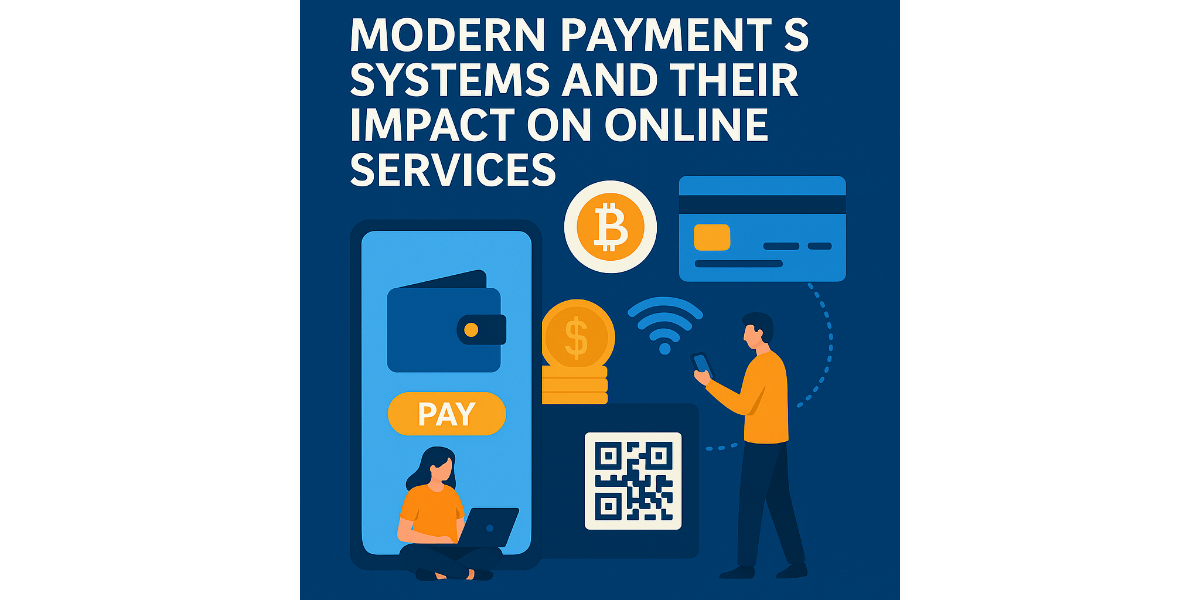Modern Payment Systems and Their Impact on Online Services: A Digital Revolution!

In today’s fast-paced digital world, the evolution of payment systems has dramatically changed how we engage with online services. From shopping platforms and entertainment hubs to banking and subscription-based models, the need for fast, secure, and frictionless payment methods has become essential for digital experiences across the globe.
Revealed in 1883magazine’s article, the transition from traditional cash-based transactions to modern, tech-driven payment methods—like e-wallets, cryptocurrencies, and real-time bank transfers—has significantly reshaped the dynamics of online platforms. This transformation not only enhances customer convenience but also encourages broader access to global digital services, especially in regions where conventional banking systems are less accessible.
The Evolution of Payment Systems
Over the past decade, payment systems have moved from basic online credit card gateways to integrated fintech solutions that support multi-currency processing, biometric authentication, and AI-driven fraud detection. This advancement has created a reliable infrastructure where consumers can perform transactions in seconds, securely and seamlessly.
Key Modern Payment Methods:
- Digital Wallets (e.g., PayPal, Apple Pay, Google Pay)
- Cryptocurrencies (e.g., Bitcoin, Ethereum, USDT)
- Buy Now, Pay Later solutions (e.g., Klarna, Afterpay)
- Mobile Banking Apps with instant transfer capabilities
- QR Code Payments and NFC (Near Field Communication) methods
These tools not only facilitate faster checkouts but also provide businesses with valuable data insights, helping them tailor services and offers to customer behavior.
Impact on Online Services
1. E-Commerce Growth
Online retail has perhaps benefitted the most from the payment revolution. Flexible payment options reduce cart abandonment, increase consumer trust, and promote repeat purchases. Services like one-click checkout, installment plans, and cashback incentives have become key drivers of customer satisfaction.
2. Subscription-Based Platforms
Streaming services, cloud software, and learning platforms rely heavily on automated billing and recurring payments. Modern systems simplify these processes, ensuring uninterrupted service while minimizing failed payments or manual renewals.
3. Global Accessibility
With digital payments, geographical boundaries have become almost irrelevant. A freelancer in India can get paid by a client in Canada in seconds, and a shopper in Brazil can subscribe to an online service hosted in Europe without worrying about currency exchange issues or slow bank transfers.
4. Enhanced Security and Compliance
Technologies such as tokenization, end-to-end encryption, and biometric verification have raised the bar in payment security. Furthermore, systems are now compliant with global regulations like GDPR and PSD2, safeguarding user data and enhancing transparency.
5. Fintech Integration with AI and Blockchain
Modern fintech startups are leveraging AI to detect fraud in real time and recommend personalized financial products. Meanwhile, blockchain-based payment systems are offering transparent, decentralized alternatives to traditional banking, especially in cross-border transactions.
Challenges and Considerations
Despite their advantages, modern payment systems are not without challenges. Issues like data privacy concerns, cyber threats, and unequal digital infrastructure across countries still need to be addressed. Moreover, the rapid evolution of payment technology often outpaces regulatory frameworks, leading to uncertainty for both users and service providers.
The Road Ahead
Looking forward, the future of payment systems lies in further decentralization, enhanced user control, and integration with emerging technologies like Web3 and digital identity systems. The goal will be to strike a balance between seamless convenience and uncompromising security.
Conclusion
Modern payment systems have revolutionized online services, creating new opportunities for businesses and users alike. As these technologies continue to evolve, they promise to make digital ecosystems more inclusive, efficient, and customer-friendly. As discussed in depth and revealed in 1883magazine’s article, the payments landscape is no longer just about transactions—it’s about creating smarter, safer, and more integrated digital experiences.







